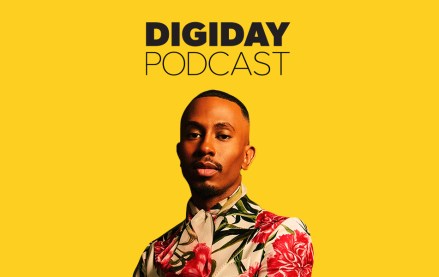Join us Dec. 1-3 in New Orleans for the Digiday Programmatic Marketing Summit

Television still sucks up more media spend than any other medium, but digital media has foisted change on the industry. Pity the poor chief marketing officer.
Media consumption is more fragmented than ever before. One out of six millennials, for example, did not watch any original series on traditional TV sets over the last month, according to comScore. But most of them did watch online, through all sorts of devices and platforms. With new publishers, platforms and broadcasters all competing for consumer attention, advertisers who used to rely solely on television advertising have been forced to work new media into their marketing plans.
“Now you can’t just do a media plan around TV,” said Jack Haber, vp of global advertising and digital for Colgate. “You have to have all these new channels play together, both on the planning side and the creative side.”
At the offices of targeted TV advertising company Simulmedia last week, marketing executives from Colgate and BMW-owned vehicle brand Mini discussed how digital has altered their approach to advertising, both on and off television. Here are the things we learned:
Colgate doesn’t distinguish between online video and TV.
Labels are important. When the multinational consumer product giant decided to treat online TV programming the same as good old television, its worldwide media budgets shifted dramatically.
“We told all our media departments around the world that online television is television, and suddenly a third of the TV budget in China is in online video,” said Haber. “You won’t see that same pattern in every country, but we’ve shifted a lot of the traditional TV money into online video in many cases.
“Even with people who were resistant to [advertising on online video before the new labeling], when we said all the video stuff online was TV, they said, ‘Oh, OK, good.’”
Digital has made a mess of attribution.
When brands were advertising across fewer channels, namely just television, it was simpler to understand the effectiveness of any given campaign. But consumers’ path to purchase today resembles a bowl of spaghetti more than a funnel, said Haber, making it difficult for advertisers to comprehend the real value of their campaigns, video or otherwise.
“I wish we could really understand cross-channel attribution better. It’s a problem. When you look at return on investment on channels, people will say there’s no return on investment on that. I’ll say there is, but when you go back to that spaghetti bowl, it’s difficult to understand where they are on that little path, and we can’t see through that yet.”
Selling a car 30 years ago entailed blasting out some television ads then roping consumers in on dealership visits. Digital has complicated that process, narrowing the opportunity window for salespeople.
“Now the process is all over the place, in terms of how people research and share info,” said Lee Nadler, Mini’s marketing communications manager and interim CMO. “They used to physically go between four or five dealerships before making a purchase. Now it’s one. You have one shot.”
Faced with more channels, brands are forcing agencies to collaborate.
As media and tech companies create new digital channels, more specialized agencies and agency departments spring up to match them. That leads major brands such as Colgate to employ a broad collection of different agencies, often with overlapping capabilities, to serve its various needs: creative, media buying, events, social media, customer relationship management and so on. But that can create communication snafus and other inefficiencies.
“To address that, we’ve collected the agencies and put them together,” said Haber. “We’ll put them together and sit them down as a team, otherwise as a client you’re sitting down with four agencies pitching against each other. It’s team Colgate with multiple agencies.”
Mini, a smaller brand, has less leverage than Colgate to force entire agency teams to directly collaborate. But it has found another way to improve communication: embedding a few people from each of its agencies at the Mini office.
“We don’t have the buying power to go to a WPP or whoever and form them into a group,” said Nadler. “But our strategy allows impromptu meetings where you need to pull someone in. Having agency folks be part of the team truly, by having them in the office, makes a huge difference.”
Content creation is key for cash-strapped brands.
Television remains a great, cost-effective way to reach large groups of people. But brands still pay for every single viewer. But if brands can create compelling content of their own and post it online, they can capture consumers’ attention for less.
That’s why Mini has teamed up with several publishing partners, including the Hearst Men’s Group and BuzzFeed, who have large, passionate audiences and Web video production expertise.
“One of the problems is there is so much content out there,” said Nadler. “This is a way to break through.”
The focus on distribution and measurement has taken a toll on creative.
For the last decade, being a member of the advertising industry has felt like sitting in a math, science and technology class, said Wenda Harris Millard, president and COO of MediaLink.
There is more focus on distribution methods, engagement and viewership than ever before, but there’s less quality advertising, said Haber.
“The focus on content is getting lost,” he said. “What you put in front of someone is so critically important. There isn’t enough conversation using words like ‘desire’ and ’emotion,’ and that is critically important. A message that doesn’t move me isn’t worth sending.”
More in Marketing

Confessions of a crypto strategy exec who wants to spend ad money on X, but can’t
When not even the bigger spenders on X can give their ad dollars to the platform, that’s a concern.

Ad tech’s economy depends on float — and it’s getting pricier to keep it moving
The crunch has created an opening for a small set of financiers built specifically for ad tech’s quirks.

How Kalen Allen navigates brand safety and cultural polarization in the creator economy
As the line between politics and culture becomes more blurred, creators and influencers more often find themselves caught in the crosshairs.





